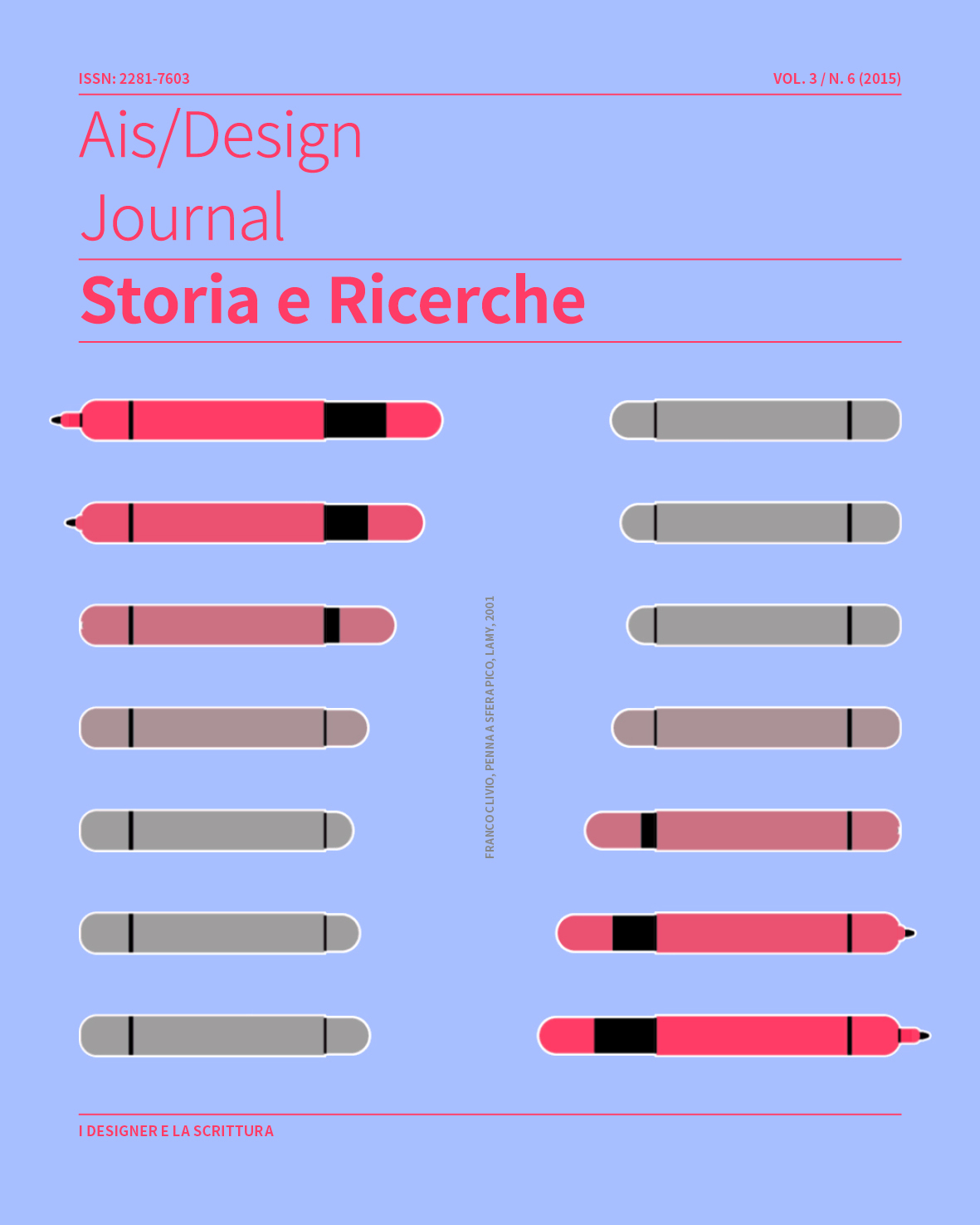How Designers Write
Note on Compared Readings for a Discipline of Language
Abstract
Is there such a thing as a design language? The rapid growth of design in Italy beginning in the earliest decades of the past century witnessed the concurrent rise of a specific language that appeared in the writings of the authors of industrial design (artists and craftsmen), as well as those of its theorists (designers and ideologists) or even critics (art critic authors).
This paper is meant to appraise design literature from a historical perspective, through the linguistic analysis of texts by its most important exponents (Ponti to Rosselli, to Munari and Mendini). The goal is to discern the main linguistic features of one of the most representative productive fields in twentieth-century Italian civil life. The expected goal is twofold: to begin, as is the case with other disciplines, a study of the linguistic and expressive forms that arose from theoretical changes in the field of design, and to gather into a Glossary the terms that become typical of the design language.
Thanks to the description of the distinctive features of linguistic expression in writings on and about design, we wish to contribute to the definition of the individuality of the design discipline, which reflects the syncretism of the specific activities involved in it: from the different phases of industrial production, to design theory, which has always relied on artistic and aesthetic approaches of its time. This analysis bears in mind the principle that a language used to explain and illustrate a practice in perpetual transformation such as design, is itself “living matter”.
Copyright (c) 2015 Elena Dellapiana, Anna Siekiera

This work is licensed under a Creative Commons Attribution-NonCommercial-NoDerivatives 4.0 International License.
Creative Commons NonCommercial-NoDerivates 4.0 international License (CC BY-NC-ND 4.0).


